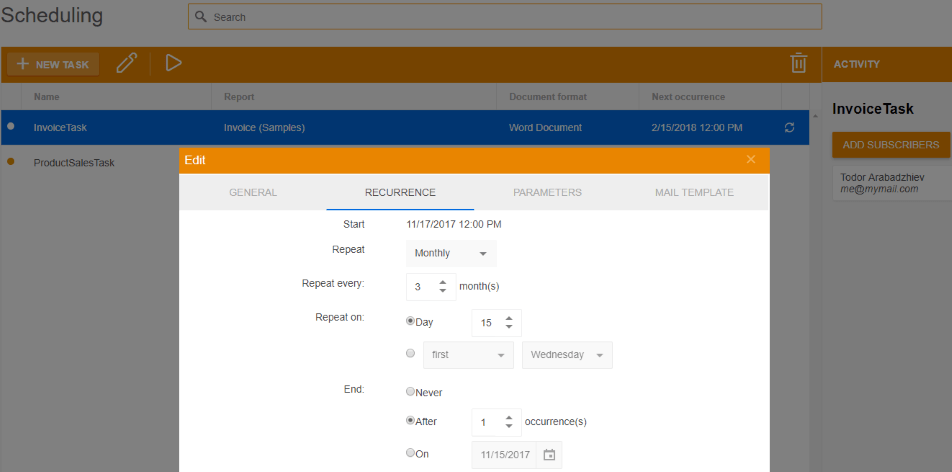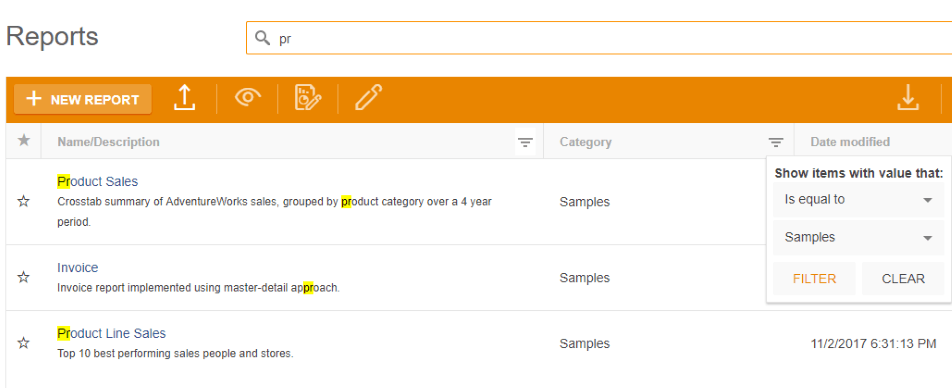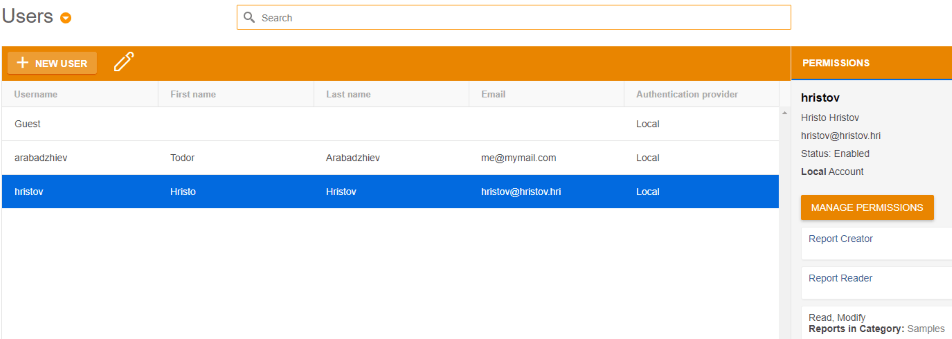Top 5 Line of Business Features in Report Management Solutions

Learn the top 5 line of business features in a Report Management Solution that are must-haves for any organization.
Reporting is an essential tool for managing Enterprise workflow. Upper-management at many companies require periodic fancy data-driven reports, sitting either on-premises or in cloud storage. In addition to stringent formatting, they usually require a safe place to manage reports and the ability to view them quickly from any device. Telerik Report Server was built with all these in mind. In this post, we share the Top 5 Line of Business features in report management solutions that we consider must-haves.
Designer
Reports are the essence of any report management solution. They are expected to crystallize the underlying causes of trends and results. Therefore, they should be richly formatted and highly stylized, be able to use a variety of data sources, and make delivery possible in multiple formats. These kinds of reports should be easily authored and previewed with a report designer. Ideally, the designer should be feature complete and intuitive for business non-developer users. Therefore, we provide a WYSIWYG user-friendly designer that is packed with all must-have features.
Scheduling
The reports should be prepared, stored in a safe place, and delivered on time to those they are intended for. With Telerik Report Server reports can be executed on a given date and time, optionally recurring, or upon satisfying a specific data condition. The execution will render the report in any of the supported export formats and email it to the scheduled task subscribers using mail merge. The targets could be users registered in Report Server or external one-time entries. Setting a scheduled task is very easy, and once set, you can track its execution history.
Storage and Caching
Reports should be securely stored, easily searched for and accessible for overview and modification. Telerik Report Server provides an easily accessed host repository to create and manage Telerik Reports. Currently, there are three storage types supported out-of-the-box:
- File, indicating the file system of the operating system
- Redis, indicating a Redis database
- MsSql, indicating a Microsoft SQL Server database
The Telerik Report Server storage can be readily migrated with the provided out-of-the-box Storage Migration Tool, which can be used from a command line or a graphical user interface.
With potentially a myriad of reports, report discovery should be an intuitive and fast process. In Telerik Report Server reports can be arranged in categories, filtered and searched for by name, description and category.
Report generation is sometimes a CPU and memory intensive process. Caching can significantly shorten the time to retrieve a report, especially if it is large or frequently accessed. Therefore, caching is also a must-have for every report management solution. Telerik Report Server's report preview functionality can cache the generated report and serve it when a user tries to preview the same report. For the user, the only evidence that the report is reused would be the rendering date and time.
Flexible Authentication with Fine-Grained Authorization
Many companies prefer their employees to use their domain credentials to log into any internal application. It’s more secure, easier to manage by IT and simpler for the end user as it won’t be necessary to remember separate accounts for each application. A widely used solution in this case is delegating user authentication to an external provider, forming a trust relationship between a Relying Party and an Identity Provider. Authenticated users should have access to all they need to do their jobs effectively. However, they should not be burdened with non-related features. Here comes the fine-grained authorization. It brings greater flexibility, accuracy, and security to the business environment.
Telerik Report Server supports authentication using the Web Services Federation (WS-Federation) specification. This allows you to leverage a previously configured system of users, roles, and trusts (like ActiveDirectory) for authentication against the Report Server user definitions. The WS-Federation standard is acquired by many service providers and it’s relatively easy to set up your own, so its support by Report Server adds to the product's versatility and effectiveness.
On the other hand, the fine-tuned role-based permissions in Telerik Report Server can limit access to features such as data source implementation, report creation and sharing to only authorized users. There are several built-in roles with different predefined permissions: System Administrator, Report Creator, Report Reader and Data Administrator. Other user roles can also be added. All user roles, except System Administrator, can be edited/deleted. A specific user is the Guest user that is created upon server initial setup. This user is not editable and has only permissions to read reports shared with him/her.
Data Connectivity
Data that feeds reports often originates from a variety of sources: Databases, Business Objects, OLAP cubes or Web Services. Reports often need to merge data from one or more of these sources. Connections need to be easy to implement and carefully secured to ensure the safety of proprietary data.
Telerik Report Server delivers all the above out-of-the-box. In addition, our report server provides Data Connection Management that controls the relation between named connection strings and actual connection strings. By embedding named instead of actual connection strings in the report definitions, the location of the used database can be easily modified from a centralized place.
Get Started Today
Start managing your reports today. Get a free trial of Telerik Report Server and don’t forget that the free trial comes with free support.
Start Your Free Trial

Todor Arabadzhiev
Todor Arabadzhiev is a Technical Support Engineer in the Telerik Reporting division. His main interests, outside software engineering, include bio sciences, cycling and camping.



